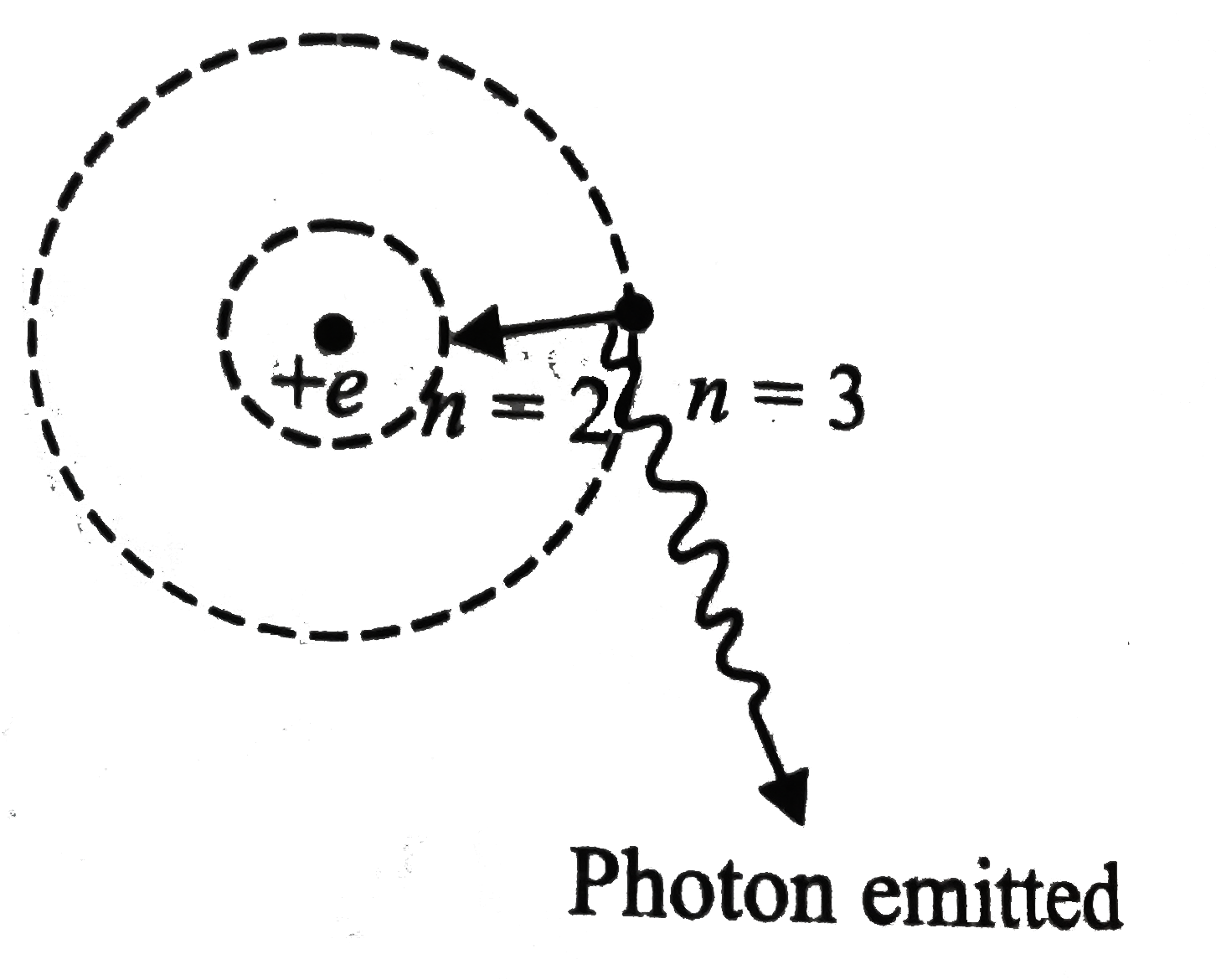A single electron orbits around a stationary nucleus of charge +Ze, where Z is a constant and e is the electronic charge. It requires 47.2eV to excited the electron from the second Bohr orbit to the third Bohr orbit. Find (i) the value of Z, (ii) the energy required to excite the electron from the third to the fourth Bohr orbit and (iii) the wavelength of the electromagnetic radiation radiation to remove the electron from the first Bohr orbit to infinity.
4
3
∞
5
The correct Answer is:D
Step by step video & text solution for A single electron orbits around a stationary nucleus of charge +Ze, where Z is a constant and e is the electronic charge. It requires 47.2 eV to excited the electron from the second Bohr orbit to the third Bohr orbit. Find (i) the value of Z, (ii) the energy required to excite the electron from the third to the fourth Bohr orbit and (iii) the wavelength of the electromagnetic radiation radiation to remove the electron from the first Bohr orbit to infinity. by Chemistry experts to help you in doubts & scoring excellent marks in Class 12 exams.
Updated on:21/07/2023Topper's Solved these Questions
- ATOMIC STRUCTURE Book:MOTIONChapter:ATOMIC STRUCTURE Exercise:EXERCISE-3
Explore 30 Videos
- ATOMIC STRUCTURE Book:MOTIONChapter:ATOMIC STRUCTURE Exercise:EXERCISE-4 (LEVEL-I)
Explore 16 Videos
- ATOMIC STRUCTURE Book:MOTIONChapter:ATOMIC STRUCTURE Exercise:EXERCISE-2 (LEVEL-I)
Explore 53 Videos
- AROMATIC COMPOUNDBook:MOTIONChapter:AROMATIC COMPOUNDExercise:Exercise - 4 | Level-II
Explore 16 Videos
- BIOMOLECULES & POLYMERSBook:MOTIONChapter:BIOMOLECULES & POLYMERSExercise:EXERCISE - 4 (LEVEL II)
Explore 17 Videos
Similar Questions
A single electron orbits around a stationary nucleus of charge +Ze, where Z is a constant and e is the magnitude of the electronic charge. It requires 47.2eV to excite the electron from second Bohr orbit to the third bar Bohr orbit. Find :
(a) the value of Z,
(b) the energy required to excite the electron from n=3 to n=4.
View SolutionA single electron orbikt around a stationary nucleus of charge +Ze when Z is a constant and e is the magnitube of the electronic charge if 47.2eVexcitethee≤ctronomthesecondbohrorbit→thethirdbohhrorbitf∈al<br>(i)ThevolueofZ<br>(ii)Tyhee≠rgyrequiredtoνc≤usthee≤ctronomthethird→thefourthbohrorbit<br>(iii)Thewave≤n>hofthee≤ctronmag≠ticradiationrequired→removethee≤ctronomthefirstbohrorbit→∈l∈ity<br>(iv)Thee≠rgypotentiale≠rgypotentiale≠rgyandtheanga––rmomentumofthee≤ctron∈thefirstbohrorbit<br>(v)Theradiusofthefirstbohrorbit(Theionizatione≠rgyofhydro≥na→m = 13.6 eV bohrradius= 5.3 xx 10^(-11) matrevelocityoflight= 3 xx 10^(8) m//secplanks'sconstant = 6.6 xx 10^(-34) jules - sec )
View Solution
Knowledge Check
Energy required for the electron excitation in Li++ from the first to the third Bohr orbit is
A36.3eVB108.8eVC122.4eVD12.1eV
A single electron orbits around a stationary nucless of charge +Ze where Z is a constant and e is the magnitude of electronic charge ,if respuires 47.2 e

is excite the electron from the second bohr orbit to the third bohr orbit
a. Find the value of Z
b. Find the energy required to the electron from n=3 ton=4
c. Find the wavelength of radiation to remove the electron from the second bohr orbit to infinity
d. Find the kinetic energy potential energy and angular momentum of the electron in the first orbit
Find the ionination energy of above electron system in electronvalt.
View SolutionA single electron orbits a stationary nucleus of charge +Ze, where Z is a constant and e is the magnitude of electronic charge . It requires 47.2eV to excite . Find
a the value of Z
b the energy required to excite the electron from the third to the fourth Bohr orbit.
the wavelength of electromagnetic rediation required to remove the electron from the first Bohr orbit to infinity.
d Find the KE,PE, and angular momentum of electron in the first Bohr orbit.
the redius of the first Bohr orbit
[The ionization energy of hydrogen atom =13.6eV Bohr radius =5.3×10_11m, "velocity of light" =3×10−8jms−1, Planck's constant =6.6×10−34j−s]
View SolutionAn electron is placed in an orbit about a nucleus of charge +Ze. It requires 47.2 eV energy to excite an electron from second Bohr orbit to third Bohr orbit. What is the value of Z?
View SolutionAn energy of 68.0 eV is required to excite a hydrogen-like atom in its second Bohr orbit to third. The nuclear charge is Ze. Find the value of Z, the kinetic energy of the electron in the first Bohr orbit and the wavelength of the electronmagnetic radiation required to eject the electron from the first orbit to infinity.
View SolutionA single electron ion has nuclear chrage +Ze where Z is atomic number and e is electronic charge. It requires 16.52eV to excite the electron from the second Bohr orbit to third Bohr orbit. Find
(a) The atomic number of element?
(b) The energy required for transition of electron from first to third orbit?
(c ) Wavelength of photon required to remove electron from first Bohr orbit to infinity?
(d) The kinetic energy of electron on first Bohr orbit?
View SolutionAn energy of 68eV is required to excite a hydrogen like atom from its second Bohr orbit to the third. The nuclear charge is Ze. Find the value of Z, the kinetic energy of the electron in the first Bohr orbit and the wavelength of the radiation required to eject the electrons from the first Bohr orbit to infinity.
View SolutionDetermine the wavelength of the radiation required to excite the electron in Li++ from the first to the third Bohr orbit.
View Solution

